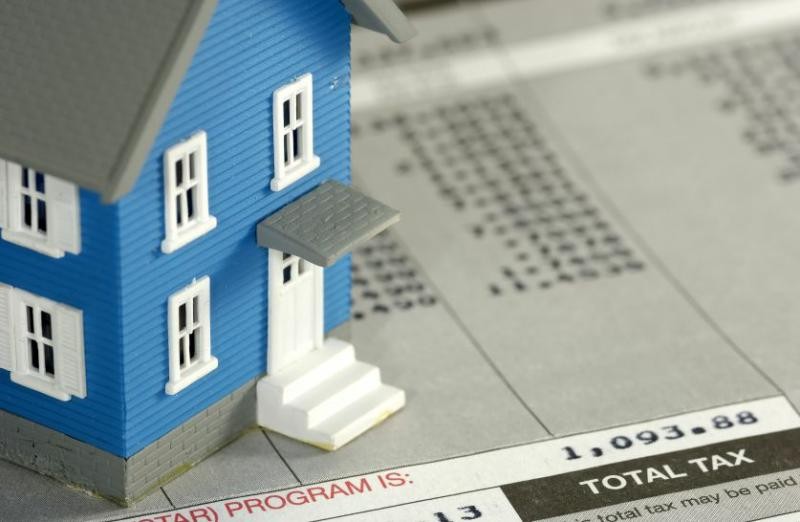A Tax Primer For Homeowners
Post on: 9 Апрель, 2015 No Comment

The tax deductibility of mortgage interest is a familiar benefit to homeowners, but it is not the only tax-related issue that homeowners need to know about. Some of the greatest challenges of owning a home come in the form of the tax regulations that relate to points and cost basis. Fortunately, a little knowledge goes a long way toward clearing up the mysteries. In this article we’ll give you the lowdown on mortgage basis points and show you how they figure into your home’s value, cost basis and, ultimately, your tax liability.
More from Investopedia:
A Primer on Points
Points are specific charges that are paid by a borrower in order to enter into a mortgage. Since points are considered prepaid interest, a borrower can use them as deductions. However, when it comes to mortgages, it’s easy to be confused about whether a homebuyer may take a full tax deduction for points, which generally amount to 1-3% of the loan value. Generally, because points are prepaid interest, you must deduct them over the term of the mortgage. However, the Internal Revenue Service states that points are deductible in the year of actual payment, as long as the following requirements are met:
- • The loan is secured by your primary residence (the one you live in most of the time)
- • Paying points is an established practice in your area
- • The points paid were not more than the amount generally charged in your geographical area
- • You use the cash method of accounting, which means that you report income in the year that you receive it and deduct expenses in the year that you pay them
- • The points were not paid for items that are usually stated separately on the settlement sheet, such as appraisal fees, inspection fees, title fees, attorney fees or property taxes
- • You provided funds at or before closing that were at least as much as the points charged, not counting points paid by the seller, and you did not borrow the funds from your lender or mortgage broker in order to pay the points
- • You used your loan to buy or build your primary residence
- • The points were computed as a percentage of the principal of the mortgage, and the amount is clearly shown on your settlement statement

In some circumstances, the points must be deducted over the lifetime of the loan. For example, points for a 30-year loan would be deducted at a rate of 1/30 per year. Points that fall into this category include those paid:
- • on a mortgage for a second home;
- • to refinance a loan (unless the loan is used to improve your primary residence), which includes points paid when refinancing to obtain a lower interest rate;
- • on a home-equity loan that is not used to buy, build or improve your primary residence. If a portion of the loan is used to buy, build or improve your primary residence, the corresponding amount of points may be deducted in the year that the points are paid.
- • If the loan is repaid early, all remaining points may be deducted immediately. Also, you need to keep in mind that the IRS Form 1098 that you will receive in January lists the amount of deductible interest that you have paid on your mortgage but does not keep track of amortized points. Be sure to include an appropriate explanation of any deduction for amortized points when you file your tax return. If the points were paid by the seller, the buyer can deduct them on his or her tax return, but must reduce the cost basis of the home by a corresponding amount.
Buying and Selling: A Closer Look at Basis
Cost basis, which is the original value of an asset for tax purposes, is often the last thing on most buyers’ minds when they purchase a new home. While you may not be thinking about it, the method by which you acquired the property and what you do with it after the acquisition affect the determination of basis and, ultimately, the gain on which any tax must eventually be paid.
Understanding the Tax
If you owned and lived in your home (primary residence) for at least two of the five years prior to selling it, you may not need to pay any tax at all, thanks to the Taxpayer Relief Act of 1997. Prior to May 7, 1997, homeowners were required to pay capital gains tax on profits from the sale of a home, unless the proceeds were used to purchase a more expensive primary residence within two years, or the homeowner was at least 55 years old and claimed a once-in-a-lifetime tax exemption on up to $125,000 in profits from the sale.
Today, a single person pays no tax on up to $250,000 in capital gains generated by the sale of a primary residence, and married couples pay no tax on up to $500,000, provided you lived in your home for no fewer than two years in the five-year period prior to the sale. If you sold a home prior to 1997 and rolled the profit into your new primary residence, you must include the amount of rollover profit when calculating your tax basis. Under special circumstances, such as declining health, a change in employment or divorce, the two-year requirement is waived and the tax exemption is based on the number of months lived in the home. For example, if the seller lived in the home for 12 months, the number of months lived in the home is divided by 24 (the number of months in two years). The result is 0.5, which entitles the homeowner to a 50% exemption on any capital gains generated by the sale of the property. Military personnel who move due to a mandatory redeployment are exempt from the two-year rule.
While $250,000 worth of capital gains ($500,000 for married couples) may seem like a significant exemption, skyrocketing housing markets in many areas of the country have caused even modest homes to appreciate significantly over time. Since you never know what the future will bring in your local real estate market, it is important to keep track of your cost basis and understand what, if any, tax liability will be generated when you sell.
Calculating Basis
To determine the cost basis on your home, you need to add the cost of any capital improvements that you’ve made to the home to the price that you paid for the home. Capital improvements are generally defined as anything that increases your property’s value and its life expectancy. Such improvements could include enlarging a kitchen, installing a swimming pool or adding an extra bedroom. Next, you need to subtract the amount of any seller-paid points, depreciation and losses.














